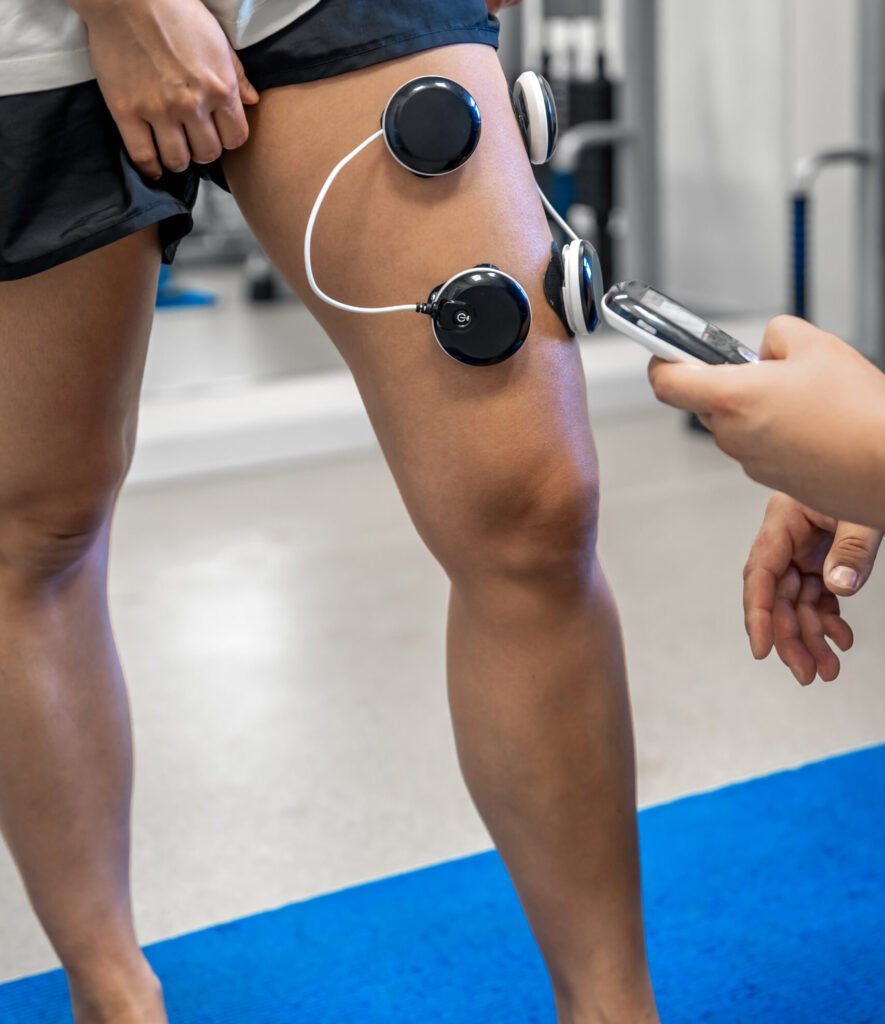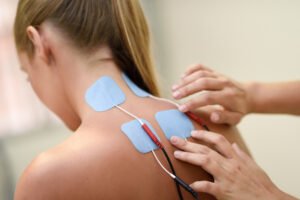
A muscle stimulator (MS), also known as neuromuscular electrical stimulation (NMES) or electrical muscle stimulation (EMS), is a device designed to elicit muscle contractions through the application of electrical impulses. These devices work by delivering controlled electrical currents to targeted muscle groups, causing the muscles to contract and relax.
Muscle stimulators are commonly used in rehabilitation and physical therapy settings to prevent muscle atrophy in individuals with limited mobility or those recovering from injuries. Additionally, athletes and fitness enthusiasts may use muscle stimulators as a supplemental tool to enhance muscle strength, improve endurance, and aid in recovery after intense workouts.
The electrical impulses mimic the signals that the central nervous system sends to muscles during voluntary contractions, providing a way to engage and activate muscles even when the individual is not actively exercising. While muscle stimulators can offer benefits in certain therapeutic and training contexts, it’s important to use them under appropriate guidance and with consideration of individual health conditions to ensure safe and effective use.
Benifit of Muscle Stimulation
 Muscle stimulators (MS) offer a range of benefits, making them valuable tools in various applications such as rehabilitation, fitness training, and muscle recovery. One notable advantage is their ability to prevent muscle atrophy in individuals with limited mobility, such as those recovering from injuries or surgeries. By delivering controlled electrical impulses to the muscles, MS can induce contractions, maintaining muscle tone and strength even when traditional forms of exercise may be challenging. In the realm of sports and fitness, muscle stimulators are utilized to enhance muscle performance.
Muscle stimulators (MS) offer a range of benefits, making them valuable tools in various applications such as rehabilitation, fitness training, and muscle recovery. One notable advantage is their ability to prevent muscle atrophy in individuals with limited mobility, such as those recovering from injuries or surgeries. By delivering controlled electrical impulses to the muscles, MS can induce contractions, maintaining muscle tone and strength even when traditional forms of exercise may be challenging. In the realm of sports and fitness, muscle stimulators are utilized to enhance muscle performance.
Athletes often incorporate these devices into their training routines to supplement traditional workouts, promoting increased muscle strength, endurance, and overall athletic performance. Additionally, MS can be employed to alleviate muscle soreness and expedite recovery after intense physical activity. The electrical stimulation helps improve blood circulation and facilitates the removal of waste products from muscles, reducing post-exercise fatigue and promoting faster recovery. While muscle stimulators can be advantageous, it’s crucial to use them judiciously, following appropriate guidelines and under professional supervision to ensure safe and effective outcomes.
Muscle stimulator (MS) F&Q's
A muscle stimulator, or MS, is a device that utilizes electrical impulses to induce muscle contractions. It is often used in rehabilitation, fitness training, and therapeutic settings to activate muscles and promote various physiological benefits.
Muscle stimulators work by delivering controlled electrical currents to specific muscle groups through electrodes placed on the skin. These electrical impulses mimic the signals sent by the nervous system, causing the muscles to contract and relax. This helps in preventing muscle atrophy, improving strength, and aiding in muscle recovery.
Muscle stimulators offer several benefits, including the prevention of muscle atrophy in individuals with limited mobility, enhanced muscle strength and endurance in athletes, and accelerated recovery after intense physical activity. They can also be used to alleviate muscle soreness and improve blood circulation in targeted areas.
Muscle stimulators find common use in rehabilitation programs for patients recovering from injuries or surgeries. They are also popular in sports training to supplement traditional workouts and improve overall athletic performance. Additionally, muscle stimulators are utilized for targeted muscle activation and recovery in fitness and wellness applications.
Yes, it is crucial to use muscle stimulators under appropriate guidance and supervision, especially when targeting specific muscle groups or addressing individual health conditions. Professional oversight ensures safe and effective usage, minimizing the risk of adverse effects and maximizing the benefits of the muscle stimulation.
